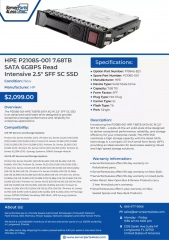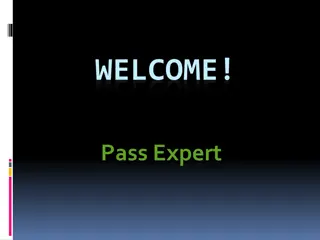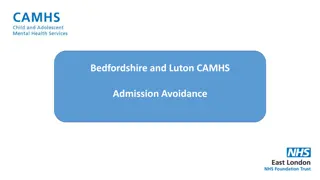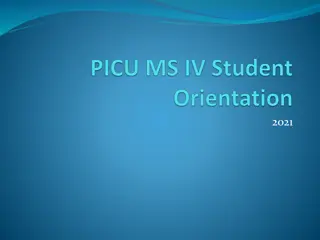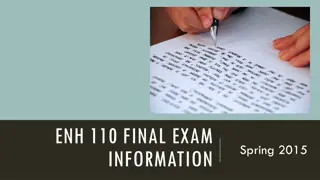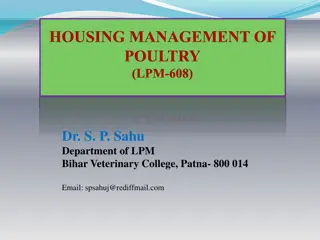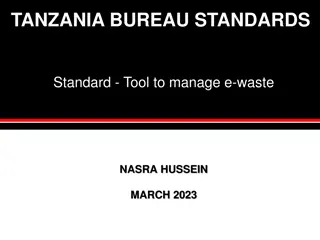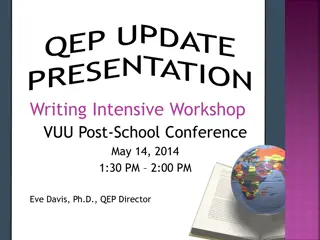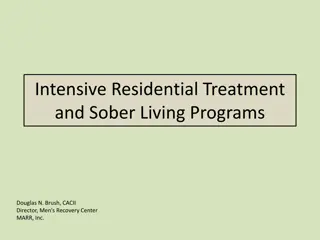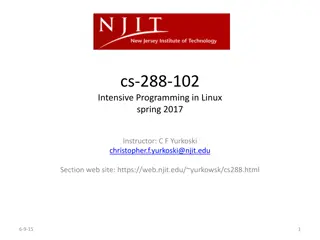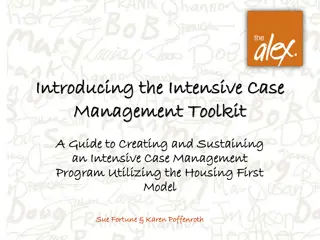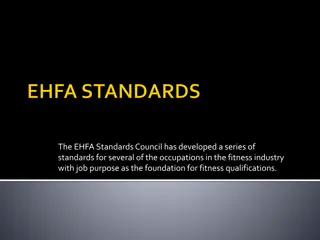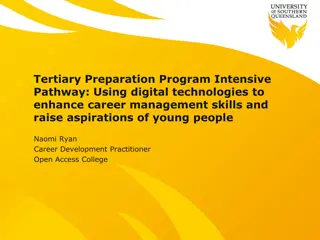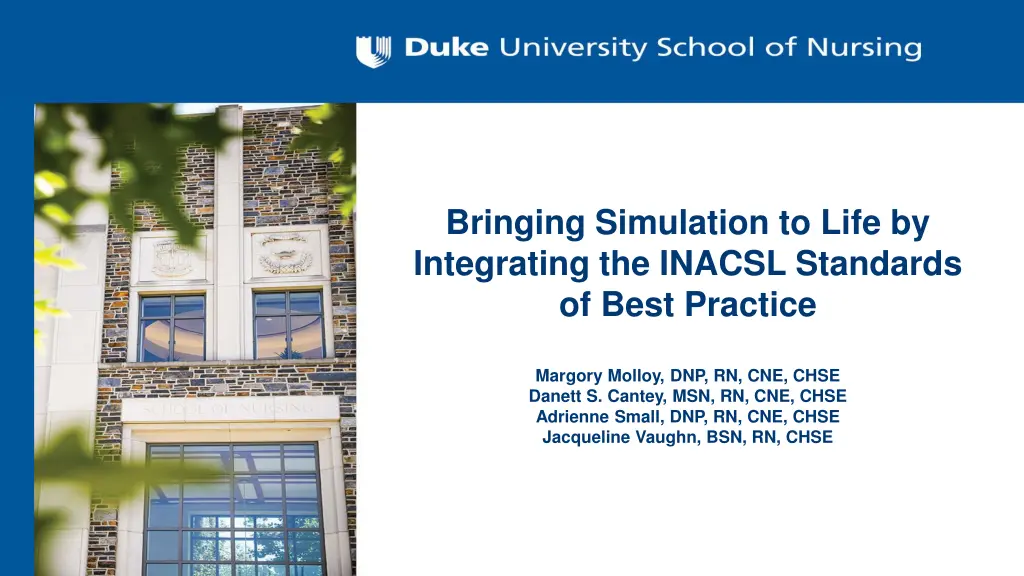
Integrating INACSL Standards for Effective Simulation Debriefing
Enhance simulation experiences by following best practices outlined in the INACSL Standards. Learn about the importance of competent facilitators, conducive learning environments, active observation, and various debriefing frameworks. Improve participant performance through structured debriefing sessions and continuous education.
Download Presentation

Please find below an Image/Link to download the presentation.
The content on the website is provided AS IS for your information and personal use only. It may not be sold, licensed, or shared on other websites without obtaining consent from the author. If you encounter any issues during the download, it is possible that the publisher has removed the file from their server.
You are allowed to download the files provided on this website for personal or commercial use, subject to the condition that they are used lawfully. All files are the property of their respective owners.
The content on the website is provided AS IS for your information and personal use only. It may not be sold, licensed, or shared on other websites without obtaining consent from the author.
E N D
Presentation Transcript
Bringing Simulation to Life by Integrating the INACSL Standards of Best Practice Margory Molloy, DNP, RN, CNE, CHSE Danett S. Cantey, MSN, RN, CNE, CHSE Adrienne Small, DNP, RN, CNE, CHSE Jacqueline Vaughn, BSN, RN, CHSE
Standards of Best Practice (INACSL) Debriefing Participant Evaluation Professional Integrity Reference: INACSL Standards of Best Practice: SimulationSM https://member.inacsl.org/i4a/pages/index.cfm?pageid=3407
Debriefing All SBEs include a planned debriefing session aimed at improving future performance. Criteria: 1. Competent facilitator 2. Conducted in an environment that is conducive to learning 3. Facilitated by a person(s) who observes the simulated experience 4. Based on a structured framework for debriefing 5. Congruent with the participants objectives and outcomes of the SBE
Competent Facilitator Implement best practices in debriefing and facilitate reflection Seek feedback using an established instrument Actively maintain debriefing skills Participate in initial and ongoing formal education
Environment Conducive to Learning Orientation, Code of conduct rules, Confidentiality Utilize supportive demeanor to encourage discussion Debrief immediately and in a separate room Manage emotional and unexpected learner responses Balance participation of all learners
Facilitator Actively Observes the Simulation Need concentrated attention and not distracted Choose appropriate feedback technique Provide formative feedback Summarize learning to close gaps in knowledge and reasoning Application to future clinical situations
Frameworks for Debriefing Gather, Analyze, Summarize (GAS) Debriefing with Good Judgement Promoting Excellence and Reflective Learning in Simulation (PEARLS) Debriefing for Meaningful Learning (DML) Plus-Delta 3D Model of Debriefing OPT Model of Clinical Reasoning
Common Debriefing Method Pros Cons Alternatives Plus (+) Delta Method + Delta Example of good behaviors/actions Behaviors/actions that would change or improve in the future Easier Task or behaviors Behaviors or actions that were difficult
Factors to Consider in Debriefing Objectives of the exercise Complexity of the scenario Experience level of the learners Familiarity of learners with the environment Time available for the session Role of simulation in curriculum Individual personalities and relationships
Debriefing starts with the Prebriefing Prebriefing: Describe the purpose of the simulation Review learning objectives Describe the process of debriefing The instructor should be prepared: To understand that learners will come with their own experiences and frames The learner will in turn: Know the expectations Know the ground rules
Reflective Practice Method used to scrutinize one s own taken-for granted assumptions and professional work practices The theory of reflective practice draws on cognitive science, social psychology, and anthropology People make sense of external stimuli through internal cognitive frames (or frame of reference, mental models, etc.), internal images or external reality Rudolph, JW, Simon, R, Dufresne, RL, Raemer, DB. There s No Such Thing as Nonjudgmental Debriefing: A Theory and Method for Debriefing with Good Judgment. Simulation in Healthcare, 2006
Practical Aspects of Debriefing Physical Setting Comfortable and private Think about seating style In-situ simulations Emotional Setting Prebrief set the expectations (Confidentiality, role of the facilitator, role of the participant, Ground rules for a civil & safe-learning environment)
Debriefing Practical Aspects- Tips Questioning: Open ended, non-judgmental Begin questions with what, how, or why to encourage deeper discussion Follow-up on participant comments Make the participant feel their contribution is important Consider the emotional impact of the exercise
Debriefing Practical Aspects- Tips (continued) Include ALL participants Reflect questions back to the participants Use silence appropriately (10 seconds is NOT too long) Be observant to the body language of the group or individual Understand group dynamics
Debriefing Traps Too much instructor talking telling to teach Avoid personal evaluation before the discussion ends Too much medical/technical Too judgmental/condescending Avoid interruptions Avoid guess what I am thinking?
Opening lines How do you feel that went? What were your first impressions when you arrived on scene? What were your thoughts about the handoff report? Who/what/where are other sources of information about the patient/scenario? Who was the leader? How did you ask for help?
Prompting discussion Repeating what the participant said to help reiterate a point, or open a discussion Relate the event to real life If participants are apathetic, address questions to them by name or go around the room in sequence Consider starting the debrief by calling on someone other than the primary participant
Questions? What were the pros, cons, or alternatives to an action? If this were to happen in real life, what might you do in the future? Did you find the scenario challenging?
Fixation Errors What did you think was happening? Has anything like this happened in real life? What made it difficult to think of other options or possibilities at the time?
Debrief Wrap-up How did you hand over the scenario? What were the take home messages of the scenario (+ delta or pro, cons, alternatives can help here)? Review the aim of the simulation and how this can help in real-life practice Give the participants the opportunity to discuss/re-contact with you if there are further questions
Professional Integrity Professional integrity is demonstrated an upheld by all involved in SBE. Criteria: 1. Foster and role model attributes of professional integrity at all times 2. Follow standards of practice, guidelines, principles, and ethics of one s profession 3. Create and maintain a safe learning environment 4. Require confidentiality of the performances and scenario content based on institution policy and procedures

